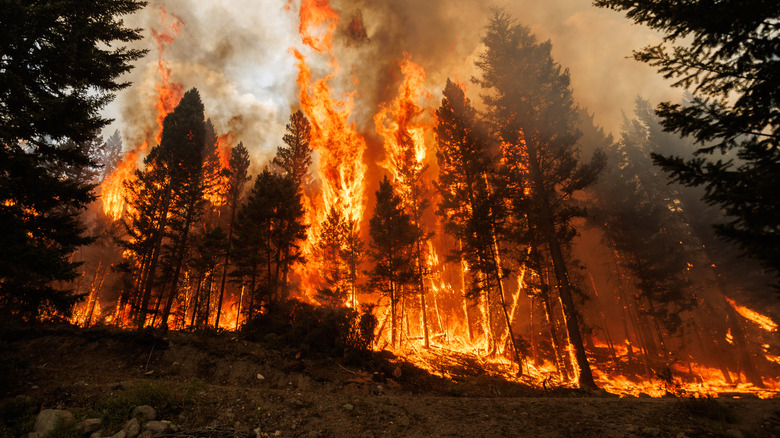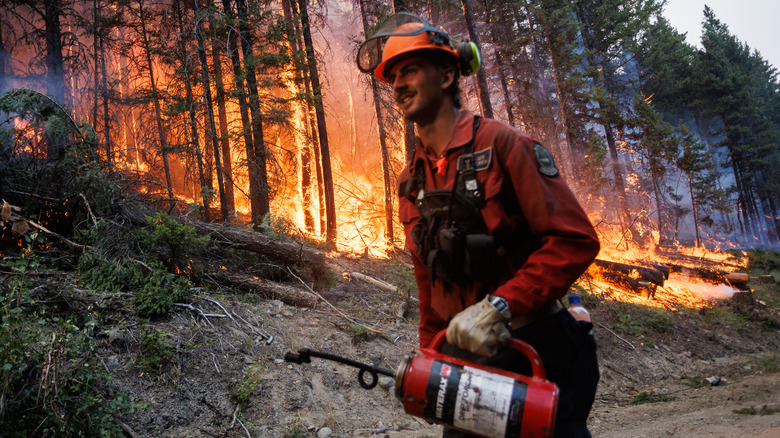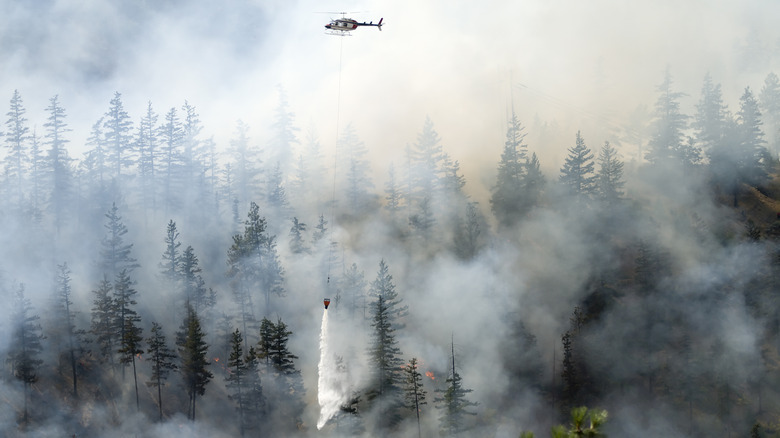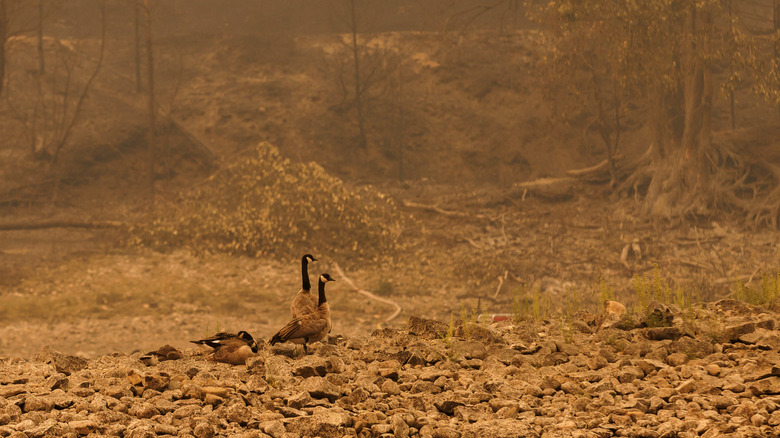How The Fires In Canada's Northwest Territories Got Out Of Control
It was a point of conversation across North America all throughout the summer of 2023: the smoke wafting south from the fires in Canada. As of August 17, 2.1 million hectares of forest have burned in the Northwest Territories according to the CBC. When that 2.3 million is added to the count from the rest of the country, 2023 has been the most destructive year for wildfires in Canada, with smoke reaching as far as Europe according to CNN. And the blazes in the N.W.T. have proven an unusually large threat to human communities, consuming some almost entirely.
The Northwest Territories are sparsely populated, being so far to the north that it falls within the Arctic Circle. The vast majority of wildfires in the region are due to natural causes, mostly lightning strikes, and they are part of the life cycle of the forests and tundra that make up the landscape. The Canadian government usually leaves them to burn unless they threaten people. But persistent hot, dry, and windy weather fanned some fires in 2023 from May into August, and scientific observers predicted that many would last until the winter. Even then, a few would likely revive come the spring. And with climate change pushing Canada into a hotter, dryer norm, scenes like the emergency evacuation of the N.W.T. capital of Yellowknife, and the unprecedented scale of the fires, are poised to become more common.
The spread of wildfires has drained firefighting resources
Outside of the Northwest territories, where the majority of wildfires are triggered by lightning strikes during the spring and summer, Canada's wildfires tend to be half natural and half manmade (per the CBC). In a typical fire season, which lasts from May to October, blazes that pose a threat to human life, infrastructure, or natural resources can be managed because of their timing. "Fires ... flare up in one part of the country, then die down and then start in another area," Canadian Agency Forest Fire Center spokeswoman Jennifer Kamau told The New York Times. One of the things that has made 2023 so unusual, and so challenging, is that heat and drought allowed fires all over Canada to burn continuously.
For the second-largest country in the world by landmass — landmass half given over to forest — that's a nearly insurmountable challenge. "I don't think the U.S. has enough firefighters for these fires, and Canada most certainly does not," said fire scientist Daniel Perrakis (per NPR). Canada's firefighters have received support in supplies and manpower from around the world, but many of this season's wildfires, including those in the Northwest Territories, are in remote areas of woodland where access and infrastructure to fight the flames are lacking.
Much of Canada has been under drought conditions
A wildfire needs three things to get going: dry plants, hot and dry air, and something to light the fire. If the third ingredient has been at its usual level in 2023, the first two have been in abundance. According to Agriculture and Agri-Food Canada, most of the country was unusually dry as of July 2023, and many areas suffered moderate to exceptional drought. Least affected was the eastern part of Canada, which saw excessive rainfall, while the southwest was the driest. A stretch between Calgary and Saskatoon faced the most severe drought.
Conditions in the Northwest Territories could be called mild by comparison; while much of it was judged abnormally dry, those conditions were thought to be short-term. But a drought is still a drought, and the N.W.T. faced record-setting temperatures this summer (per NC State University). That these conditions settled in early in the fire season helped exacerbate blazes and affected their timing. "We've got drought levels that are if not unprecedented, at least in the extreme category," Daniel Perrakis told NPR, "and the fire season's [arriving] early."
Climate change is shifting the character of the Northwest Territories
It's part of the ecosystem of the boreal forests that dominate the Northwest Territories that they sometimes burn; per NPR, their health depends on it. Climate change didn't cause the 2023 wildfires. Nor were the conditions that spawned 2023's unusually destructive fire season impossible without manmade global warming. As far back as the 1700s, smoke from Canadian wildfires reached down to the future United States. Fires may even have once been more common than they are now.
But manmade climate change has had an impact on Canada, the N.W.T., and on fire season. Canada as a whole has warmed twice as fast as the world average according to the 2019 Canada's Changing Climate Report. The Arctic is warming at four times the average rate (per the CBC), making the N.W.T. a particularly vulnerable area to climate change. Hotter, drier conditions predicted for the region under increased warming mean earlier and longer fire seasons that will continue to test and exceed the ability of humans to respond.



